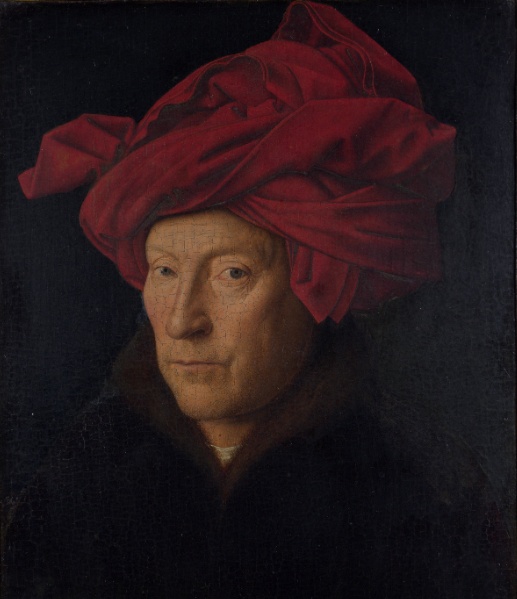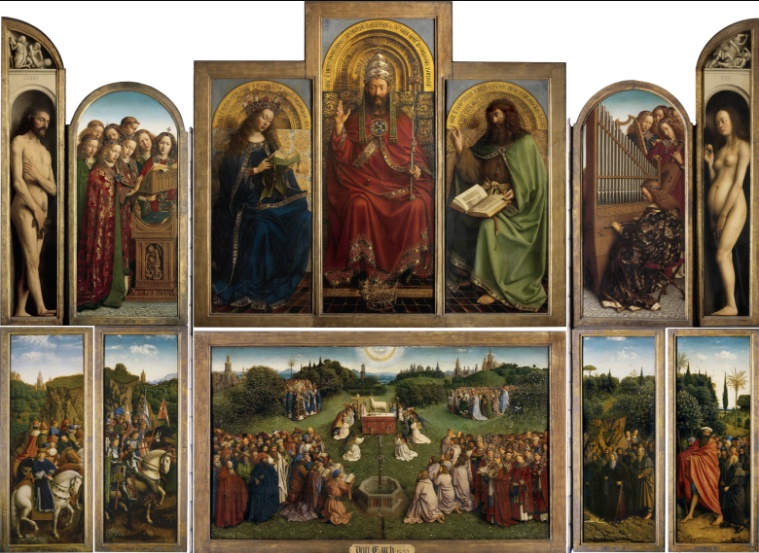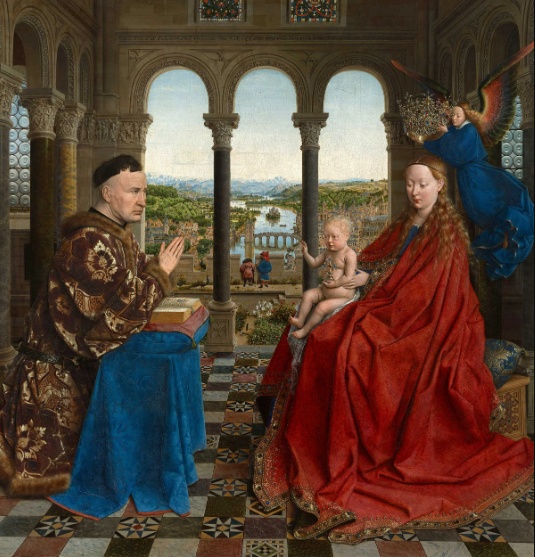
Flanders artists have significantly contributed to European painting through their innovative techniques and unique styles. Their advancements in combining linear and atmospheric perspective set them apart and had a profound impact on the development of art across Europe. This blending of perspectives created a sense of depth and realism that distinguished Flanders painting from other regions.
Despite the organized and methodical nature of their works, much about the lives of these artists remains unknown. Many of them left no biographies, and their names are not widely recognized. Yet, their artistic achievements are undeniable.

Jan van Eyck is one of the most celebrated artists from Flanders. His name first appeared in records between 1455 and 1456 at the court of the King of Naples. For a long time, Jan van Eyck was credited with the invention of oil painting. His exceptional technique in handling oil paint brought a new level of transparency and brightness to his works, giving them a jewel-like quality with light seeming to emanate from within the paintings.

Van Eyck's mastery is evident in works like the Ghent Altarpiece and the Madonna of Chancellor Rolin. In the Ghent Altarpiece, he expertly used perspective to give solidity to the forms. In the Madonna of Chancellor Rolin, he created a believable indoor space with a detailed view of the landscape outside, blending naturalism with rich symbolic meaning. Van Eyck and other Flanders painters used naturalistic methods to depict the visible world while imbuing it with spiritual significance.

The Madonna of Chancellor Rolin is particularly noteworthy. This painting, created around 1435, features Nicolas Rolin, the Chancellor of Burgundy, kneeling in prayer before the Virgin Mary and the Christ Child. The detailed background includes a panoramic landscape that stretches out behind the figures, showcasing Van Eyck's skill in atmospheric perspective. The intricate details in the architecture, the delicate rendering of the figures, and the luminous quality of the paint all demonstrate Van Eyck's mastery. Each element in the painting, from the plants in the garden to the distant mountains, is rendered with a precision that brings the scene to life, making it one of the finest examples of early Netherlandish art.
Flanders painting is also known for its symbolic elements. Although the scenes often depict everyday life in Flanders towns, each detail may carry deeper meanings. For instance, a candle might symbolize the Virgin Mary, while a brass jug could represent her purity. This combination of naturalism and symbolism adds a layer of spiritual depth to their work.
When comparing Flanders and Italian paintings, notable differences arise. Van Eyck's use of space rivals that of contemporary Italian artists, but Flanders painters focused more on detail and naturalistic representation. In contrast, Italian artists emphasized the conceptual and idealized aspects of nature. Italians preferred pure profile views, reminiscent of classical coins, while Flanders artists focused on detailed and realistic depictions. Although both traditions claimed to imitate nature, Flanders painters emphasized the creations of nature itself, while Italians focused on the creative forces of nature.
Van Eyck was one of the first great masters of portraiture in Europe, concentrating on the unique features of individuals. His successor, Rogier van der Weyden, also excelled in portraiture, focusing on the overall effect and imbuing his subjects with a sense of nobility. Rogier introduced a three-quarter pose, adding a sense of movement and establishing a connection with the viewer. Their influence extended into the early 16th century, impacting artists like Petrus Christus, Dirk Bouts, and Hugo van der Goes.
The three-quarter pose introduced by Rogier van der Weyden was a significant departure from the traditional profile view. This innovation allowed for a more dynamic representation of the sitter, providing a better sense of the person's character and presence. Rogier's portraits are characterized by their emotional depth and psychological insight, which were groundbreaking at the time. His ability to convey the inner life of his subjects through subtle facial expressions and meticulous attention to detail set a new standard in portrait painting.
In the 15th century, paintings from Flanders were exported throughout Europe, significantly influencing the art of Germany, England, Scotland, France, Spain, Portugal, and Italy. Italian patrons and painters particularly admired the achievements of Flanders in oil paint, and this admiration led to widespread adoption of these techniques. In Northern Europe, the new artistic impetus primarily drove innovations in painting, with less impact on sculpture and architecture.
The export of Flanders paintings played a crucial role in spreading their techniques and styles. Artists in other countries eagerly studied the works of Flanders masters, learning from their use of oil paint and their detailed, naturalistic approach. This exchange of ideas helped to elevate the standard of painting across Europe, leading to a more interconnected and vibrant artistic community. The influence of Flanders artists can be seen in the works of many European painters who adopted their techniques and incorporated them into their own styles.
The contributions of artists from Flanders in perspective, oil painting techniques, and symbolic artistic styles significantly advanced European painting. Their works, characterized by naturalism and spiritual symbolism, continue to inspire artists today. Flanders artists like Jan van Eyck and Rogier van der Weyden set high standards in portraiture and painting that resonated throughout Europe, leaving a lasting legacy in the history of art.
Flanders artists not only pushed the boundaries of what was possible with oil paint but also infused their works with a level of detail and realism that was unprecedented. Their ability to capture the subtleties of light and texture brought a new level of depth to their paintings. This attention to detail extended beyond the physical to the psychological, as they sought to portray the inner lives of their subjects with a nuanced and sensitive approach.
The symbolic richness of Flanders painting added another layer of complexity and meaning to their work. Every element in a painting was carefully chosen and imbued with significance, creating a visual language that conveyed deeper spiritual and moral messages. This approach allowed viewers to engage with the paintings on multiple levels, appreciating both their aesthetic beauty and their underlying symbolism.
In summary, the impact of Flanders artists on European painting cannot be overstated. Their innovations in perspective, mastery of oil painting, and integration of symbolism set new standards for artistic excellence. Their legacy is evident in the continued admiration and study of their works, which remain some of the most celebrated in the history of art. Through their dedication to their craft, Flanders artists have left an indelible mark on the world of art, influencing generations of painters and shaping the course of European painting for centuries.